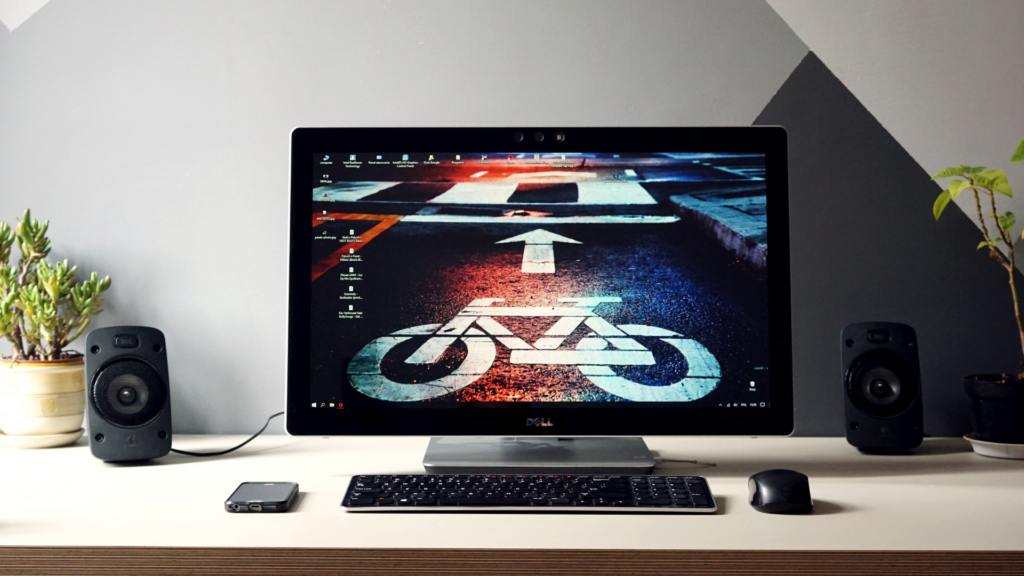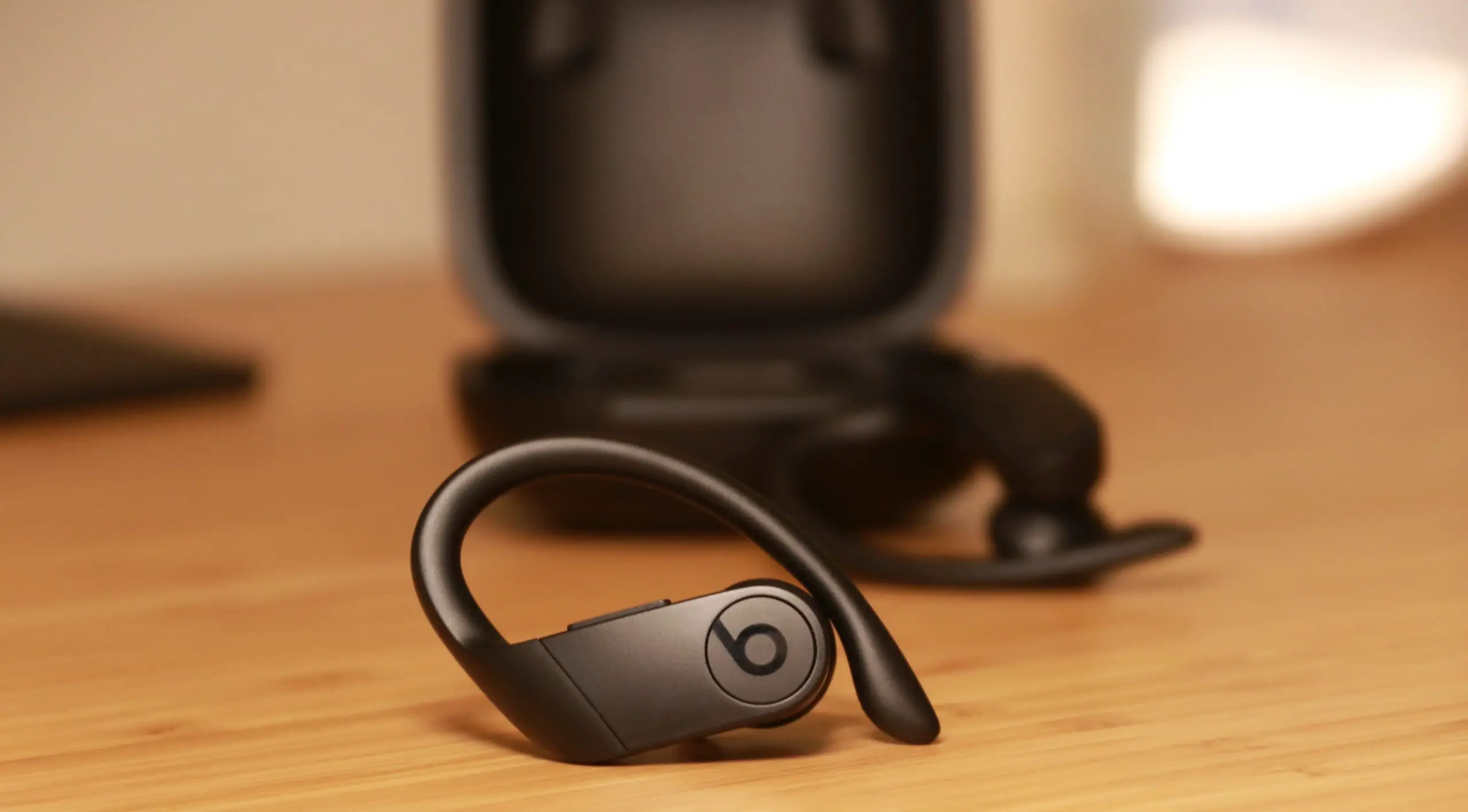Do Dell Monitors Have Speakers?

Most Dell monitors do not come with built-in speakers, but there is a 3.5mm audio output so that you can connect speakers through an HDMI cable. However, there are some steps you need to take to set the audio signal to reach your speakers instead of simply plugging your speakers in and getting sound immediately.
Keep reading to learn how you can set up speakers for your Dell monitor and other troubleshooting when it comes to getting the best audio experience from your monitor.
Do Dell Monitors have speakers?
Dell monitors do not have an audio component or a headphone jack. If you want to get audio from your monitor, you must connect external speakers through an HDMI cable. Once you have the speakers connected, you need to take a few more steps to set the audio signal to your speakers and get sound.
How to set up speakers on a Dell monitor
To set up external speakers to your Dell monitor, you will need an HDMI cable along with your speakers. Ensure that the external speakers you decide to use are equipped with an HDMI output and not a headphone output cable since Dell monitors don’t have headphones jacks.
To set up your speakers:
- Connect your HDMI cable to the computer and your speakers.
- Start your computer and click the “Sound” icon in the taskbar on the bottom right of the desktop screen.
- A pop-up menu will appear with a list of audio output devices. Select the name of your speakers. Usually, the device will have a label like “Speakers/Headphones.”
- You will want to check the volume to see if the device is on mute or not. Right-click on the “Sound” icon and click on the “Open Volume Mixer” option that appears on the new menu. A window will open showing all your audio devices, and you will be able to check whether your speakers are mute or not and how loud the volume is relative to your other audio devices.
You should now be able to have sound come from your speakers. If there are any issues with sound coming from the speakers, you should check to make sure you selected the correct audio output device as it might have a different name than you think.
Which Dell monitor has built-in speakers?
Some Dell monitors have built-in speakers that you can use for audio, such as the Dell S2419H 24″ Full HD monitor. However, these monitors are discontinued, so they’re difficult to find, and you are unlikely to find them new.
How do I know if my monitor has built-in speakers?
It can sometimes be difficult to tell just by looking at your monitor if it has built-in speakers, but you can check by checking the “Playback devices.” Right-click on the “sound” icon in the bottom right of the desktop screen and select “Playback devices.” This menu will list which devices have audio output devices like speakers. If your monitor has speakers, you will see the name of your monitor listed.
Why does my monitor have no sound?
If you have set up your speakers, but you aren’t getting any sound, then there are a few reasons why you might have issues. Here are some easy things to check before getting into more complex audio problems:
- Check to see if you’re computer’s audio is on mute. You should quickly check by looking at the “Sound” icon in the bottom right of the desktop screen.
- Double-check your PC settings as outlined in the setup steps above so you can make sure your speaker device is not on mute in the settings.
- Check the HDMI cable connection. Sometimes the cable will come loose, or you can try unplugging and replugging the cable to fix the connection.
- Check the speakers on another PC or laptop to see if there is an issue with the speakers themselves.
If you try these and still have issues with getting audio from your speakers, there are probably some issues with the speakers or your connection.
Do display ports have audio?
Display ports do have multi-channel audio and many other advanced audio features. DisplayPorts work much the way HDMI cables do but are capable of higher bandwidth which means they can transfer more signals at a time. If you use multiple monitors for your computer or your speakers, using a DisplayPort would be very helpful.
How to connect speakers with a DisplayPort to Dell monitor
You will need to check the compatibility of your devices to see if you can connect a speaker with a DisplayPort and make sure you have a compatible DisplayPort since DisplayPort cables are backward compatible. If you can’t connect a DisplayPort, you might find a passive or active DisplayPort to HDMI adapter useful.
To connect your speakers:
- Use the Windows search bar to find “Sound Settings.”
- Use the drop-down menu under “Output devices” to see what audio output devices are available for your computer. Select the name of your speakers.
- Check the “Master volume” for your speakers to make sure they aren’t on mute. You can also click on “Manage sound devices” if you don’t see your speakers in the drop-down menu or you’re having trouble connecting to get more features.
If you are having issues getting sound from your speakers through the DisplayPort even though your settings say the speakers are connecting, check for a driver update for your graphics card or chip, which may fix the issue. You may also have the wrong DisplayPort cable for your devices.
To learn more about the different versions of DisplayPorts, check out this article from Cable Matters.
Final Thoughts
A few modules of Dell monitors have built-in speakers, but the majority of their monitors do not. You can always check whether your specific Dell monitor model has speakers by checking the audio output devices list.
If your monitor doesn’t have speakers, you will need to purchase external speakers with an HDMI connection if you want to use speakers with your Dell monitor. A few more steps are necessary after plugging in your speakers, but the overall process is relatively easy, and you will have more control of the quality of the speakers by purchasing your own.





